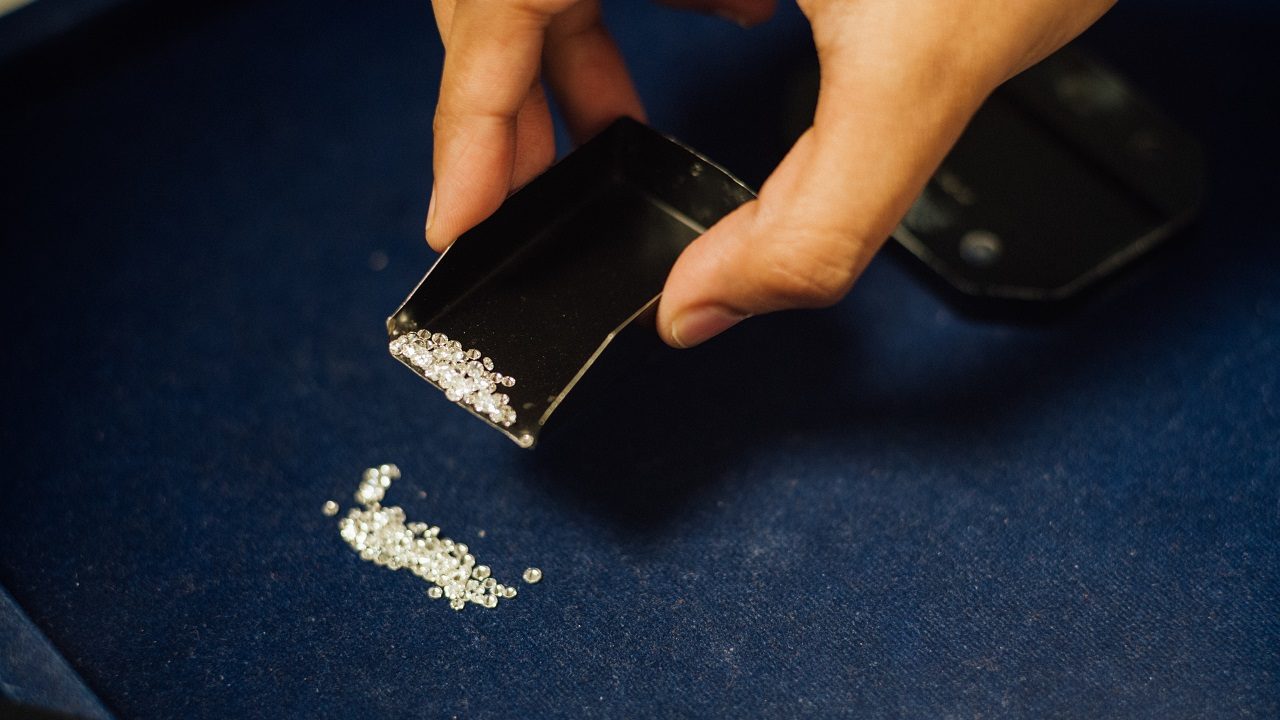Melee goods — and the rough that produces them — are outperforming larger sizes due to strong luxury demand and a supply squeeze.
Inflation, rising interest rates, lockdowns in China: The diamond industry is facing diverse forces that, by and large, have had a negative effect on the market. Major mid-market retailers in the US are warning of depressed consumer sentiment, while dealers are barely making sales to the Chinese mainland. The high end is stronger, mostly because the wealthy are less affected by the financial strain and are enticed by glamorous brands.
This might make it intuitive that larger diamonds, being rarer and more expensive, would weather the storm better than their smaller, cheaper counterparts. However, the picture that’s emerging is more complicated. Polished from around 0.30 to 3 carats is weak, traders report. The exceptional stones are holding up, but the real movement is in melee.
Tender trends
The hard indication of this is on the rough side, where miners and tender houses have been reporting strong demand for goods under 0.75 carats, which yield those tiny stones. The “3-grainers” and above — a grainer is 0.25 carats — saw pricing pressure at Petra Diamonds’ tender in October and November, while smaller sizes were “largely flat” compared with the previous sale, the miner said.
Trans Atlantic Gem Sales (TAGS), which organizes tenders in Dubai, has seen a similar trend in the past few months. In September, its customers left 45% of goods on the table, with the 0.75-carat and larger items most affected.
De Beers responded to the circumstances by allowing clients to sell up to 20% of their 1-carat-plus purchases back to the miner at its sight in October and November, compared with the usual cap of 10%.
Small but shiny
The strength in the smalls comes mainly from the high-end retailers that buy top-quality melee for expensive fashion jewelry, combined with supply shortages, one sightholder explains on condition of anonymity. The watch industry is entirely focused on small stones, while melee constitutes the bulk of diamond content at brands such as Tiffany & Co., he explains.
“Most [luxury] brands seem to be confident that sales will be good, and some have already placed orders for the coming six months,” the sightholder says. “And I don’t see any sign that this quantity is likely to go down in the short term. Rough [demand] in smalls is going up, as after Diwali, a lot of factories have opened up again, and there is a lack of rough in [the Indian manufacturing city of] Surat in smalls.”
By contrast, the large retailers operating in China have drastically reduced their buying because of the impact of Covid-19 measures on local demand. When the mainland is strong, it drives demand for the 0.30- to 1-carat, high-color and high-clarity polished popular in the region. That sales gap has hurt the market for 1- to 2-carat rough.
“Most people thought in June-July that China would eventually open up,” another market insider said. “They [began] building up inventory in areas where they were hoping there would be demand. Obviously, it hasn’t come out as expected.”
Some of the demand for smalls comes from US mid-market sellers, notes Sanjeev Jain, CEO at New York-based polished wholesaler House of Diamonds. This is mainly 0.20- to 0.30-carat, H- to I-color, VS2- to SI1-clarity goods, Jain says. The 1- to 1.50-carat range has suffered more due to inflation, though recent price drops have led to a slight recovery in sales, he says.
Filling factories

Smaller rough also has the benefit of being less of an investment for Indian manufacturers looking to occupy their workers amid liquidity problems. Furloughing employees often results in them never coming back, as many cutting firms learned during the coronavirus shutdowns.
“In a situation where the market is not strong, we nearly always see a shift towards smaller, cheaper goods for manufacturing in India,” says Mike Aggett, CEO and director at TAGS. “Polished pull-through is a bit slow at the moment. There’s a lot of inventory. I think the pipeline is pretty full.”
The tender house saw stable pricing in smaller-size rough at its November sale, while low-quality, brown goods saw a “marginal increase,” it reported. The 3-grainer category, after a few months of drops, “did not see any further decline,” indicating the trend was easing.
Sanctions and shortfalls
Supply has also dropped due to the lack of Russian goods since Western sanctions and consumer boycotts kicked in earlier this year. Alrosa is the biggest producer of small diamonds, and while its rough has continued to enter the market, volumes are lower than before the Ukraine war.
The merchandise is also concentrated among fewer manufacturers, exacerbating the perception of shortages, market participants tell Rapaport News. This is an area that was already seeing shortfalls because of the closure of Rio Tinto’s Argyle mine in Australia in 2020.
“It cannot be compensated by the other main suppliers,” the anonymous sightholder cautioned.
One of the best alternative sources for smalls is De Beers’ Venetia mine in South Africa. However, the deposit is currently in a transition period while it shifts from open-pit to underground operations, with ramp-up set for next year. Sightholders will likely be wiser about De Beers’ rough availability this Friday, when, according to market insiders, the company is due to announce its 2023 supply allocations.
Relative results
Unlike a year ago, when the melee market boomed, the current reality is more one of modest strength. It’s also a question of comparisons: The category appears positive when contrasted with the weakness in larger categories.
Prices of small rough diamonds have still dropped around 5% in the last three months, though they came up somewhat in the past month, estimates Aggett at TAGS. That contrasts with a slump of around 10% to 15% in the larger items, he says.
How the situation develops depends on what sells during the US holiday season and which types of goods the trade will be restocking in January. “[What] we’ve seen in the last three tenders is just this caution,” reflects Aggett. “Nobody quite knows what’s going to happen, where it’s all going. With interest rates, Russia, there are a lot of unknowns. It’s a period of big concern for everybody. But it’ll settle.”
Main image: Melee diamonds under analysis at De Beers premises in Surat, India. (Ben Perry/Armoury Films/De Beers)



